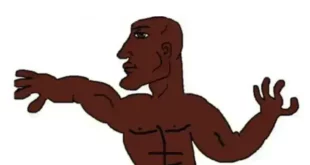The Guardian’s entire top feature today is a series of stories attacking the Guardian as evil slave owners.
The paper published more than half a dozen stories about how evil the paper is. Strangely, the articles by the Guardian are extremely biased against the Guardian, and leave the reader feeling that the Guardian did not get a fair shake.
Frankly, the Guardian should not have such a strong bias when reporting on the Guardian.
The Guardian summarizes this series of hit pieces against the Guardian:
What is the Scott Trust Legacies of Enslavement report?
It is the result of independent academic research commissioned by the Scott Trust, the Guardian’s owners.
The research began by investigating historical links between John Edward Taylor, the journalist who founded the Manchester Guardian in 1821, and transatlantic slavery – as well as researching the investments and business activities of the 11 other men who loaned money to start the newspaper.
What did the research discover about John Edward Taylor?
The review found that Taylor had links to slavery through partnerships in cotton manufacturing and merchant firms that imported raw cotton produced by enslaved people in the Americas.
How did they find this?
Researchers identified links to plantations in the coastal islands and Lowcountry regions of South Carolina and Georgia after reviewing an invoice book showing that his firm, Shuttleworth, Taylor & Co, had received cotton from the Sea Islands region of the US, which included the initials and names of plantation owners and enslavers.
What about the Guardian’s early financial backers?
Nine of the 11 men who loaned Taylor money to found the Manchester Guardian had similar economic links to transatlantic slavery through their commercial interests in Manchester’s cotton and textiles industry.
One of these men, Sir George Philips, was an enslaver of people as co-owner of a sugar plantation in Hanover, Jamaica. In 1835, Philips unsuccessfully attempted to claim compensation from the British government for the loss of his human “property”. However, his business partner’s claim for 108 people enslaved on the plantation was successful.
Researchers were unable to find more information in the stipulated timeframe on two of the backers, although they are likely to have been cotton merchants.
Did the research identify the enslaved Africans whose labour enriched the Guardian’s founders?
The third stage of research focused in part on investigating links with plantations in the south-eastern US and Jamaica, and identified some of the enslaved people connected to the Guardian founders.
Researchers were able to find records from 1862 with the names of people enslaved on a Sea Islands plantation that had sold cotton to Taylor’s firm. They include 90-year-old Toby, 50-year-old Clarinda, 36-year-old Billy and seven-year-old Nancy, who were enslaved on the Spanish Wells Plantation on Hilton Head Island.
Records from the Success plantation in Jamaica, partly owned by George Philips, had slightly more information on enslaved Africans, including details about the incredible life of one resistance fighter. Granville, who was enslaved on the Success plantation, was a freedom fighter who was persecuted for his involvement in Jamaica’s Baptist war from 1831 to 1832. He was one of 60,000 enslaved Jamaicans to take part in the uprising.
The uprising, also known as the Christmas rebellion, is considered the largest slave rebellion in the West Indies and played an important role in the abolition of British slavery.
…
How did the Guardian respond to the research findings?
The owner of the Guardian has issued an apology for the role the newspaper’s founders had in transatlantic slavery and announced a decade-long programme of restorative justice. The Scott Trust said it expected to invest more than £10m, with millions dedicated specifically to descendant communities linked to the Guardian’s 19th-century founders.
So the guy didn’t even own any slaves? He just didn’t ethically source his cotton?
That’s the big deal here?
Interestingly, they did not include anything about how the sickening Jews were actually responsible for slavery, or how the blacks were selling each other into slavery.
Instead, they blame the white guy who is their own benefactor, and created their mediocre paper.
This is just an absurd, ridiculous slander agenda against a great man. I would say that even if he actually owned the slaves. Thomas Jefferson and many other great Americans owned slaves.
But how is buying American cotton something you can be so aggressively condemned for?
No one is attacking the green movement for using African child slaves to go down in the mines to get the ingredients for their electric cars in the current year.
Surely, those kids are much worse off than American slaves hundreds of years ago? I mean, the white slave owners wouldn’t treat slaves like these blacks treat slaves. Obviously.
There was a CNN International (slightly more serious than normal CNN) piece about it a while ago.
But like, this is something you could easily stop if you cared about it. You can’t stop slavery hundreds of years ago, because of the way space and time work.
No one cares about child slaves in Africa, so I just can’t believe they actually care about American slaves hundreds of years ago. The whole thing just seems like a way to attack people that leftists don’t like.
In my opinion, the Guardian does not have “links to slavery” and the Guardian should stop slandering the Guardian with this histrionic nonsense.
 Daily Stormer The Most Censored Publication in History
Daily Stormer The Most Censored Publication in History




